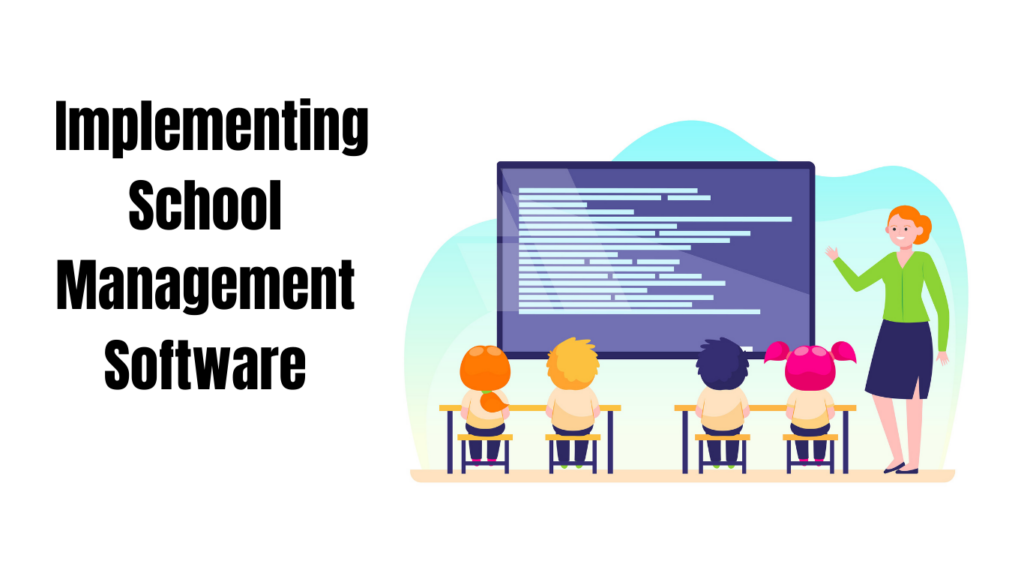Student Information System (SIS) is a software application that manages student data for educational establishments. The Student Information System provides the capabilities to record students’ test and other assessment scores through an electronic grade book, prepare student schedules, track student attendance and school, college or manage many other needs of data relating to students at the University. It is called Student Information Management System, Student Record System, Student Information Management System, also known as Campus Management System or School Management System (SMS).
These systems vary in size, scope and capacity depending on the packages that are implemented in relatively small organizations to cover only student data, to enterprise-relevant solutions aimed at with significant local responsibility Large multi-campus organizations have to cover most aspects of operations. Many systems can be added with varying levels of functionality by purchasing add-on “modules” and specifically configured by their home institutions to meet local needs.
Until recently, the general function of a student records system has been to support the maintenance of personal and study-related information relating to:
1.Managing inquiries made by prospective students
2.Manage the admissions process
3.Admission of new students and storage of teaching preferred options
4.Automatic scheduling of classes and teachers
5.Manage tests, assessments, marks and grades and academic progress data
6.Maintain records of absences and attendances
7.Recording of dialogue with students
8.Maintain records of discipline
9.Providing statistical reports
10.Maintenance of boarding house details
11.Keep parents/guardians informed of student details through a parent forum
12.Special Education/Individualized Education Planning IEP Services
13.Human Resource Services
14.Accounting and Budgeting Services
15.Student Health Records
Integrated Systems
In recent years, a variety of pressures have been driving the development of student information systems and, as a result, many leading institutions have adopted their systems. Such pressures are:
Demand 24×7 web-based access to information by students, instructors and parents.
increasing demand for volume and frequency of data for accountability and other purposes (so-called vertical reporting to state level, provincial and national agencies)
Student information systems are integrated with other tools, particularly instruction-related, curriculum (CMS ) systems such as School Aura, Blackboard, RM Learning Platform, Chamilo, Clarolin, eFront, elearnapp Dokeos, Sakai, Moodle, Spiral Universe and The importance of integration with education.
SIF (Schools Interoperability Framework compliance).
Modern use also indicates that school Aura can benefit while reducing the cost of technology; It has even made it possible for these organisations to use school software that not only includes management of student information but also provides a means for parents or guardians to contact teaching staff through parent portals.
Disadvantages of School management system
Unlike upgrades to the level of a web browser or a word processor, changes and upgrades to these systems have a significant impact on the daily activities of every school employee. These systems typically touch every aspect of school operations, even in the case when only basic modules are used. For these reasons, care should be taken in considering the impact on:
Workflow: Since these programs are tightly tied to a school’s business workflow and processes, changes to the SIS system may force changes in workflow. If not carefully considered prior to implementation, it can have a significant impact on daily activities.
Data conversion: Data conversion of historical data (tapes, attendance, health records, etc.) for current and older students can also be an important issue for conversion to the new SIS (SIS). Since most schools are required to keep historical data on their old students, care should be taken as to what information will be converted and what will be stored.
Customized reports: What and how student information is stored has not been standardized, with most schools having their own processes and systems for printouts of student grades or attendance records. Since most SISs are not fully compatible with previous SISs, upgrading to such can be a long and tedious process.
Training: Some newer SIS programs tend to include with them many unnecessary features that are prominent for very overused users, so to use the newer SIS program Training employees can be quite an expensive and time-consuming process.
Like an ERP system, schools should consider processes such as the ERP System Selection Methodology when selecting a SIS system.
You may also like
-
Hyderabad’s Trusted Destination for CA Coaching Excellence!
-
Online Statistics Assignment Help from Experienced Statisticians
-
How to Choose Student Housing Near the University of California Berkeley
-
Student Experiences: What to Expect When Studying in Sydney
-
Understanding the Importance of Socializing During College

